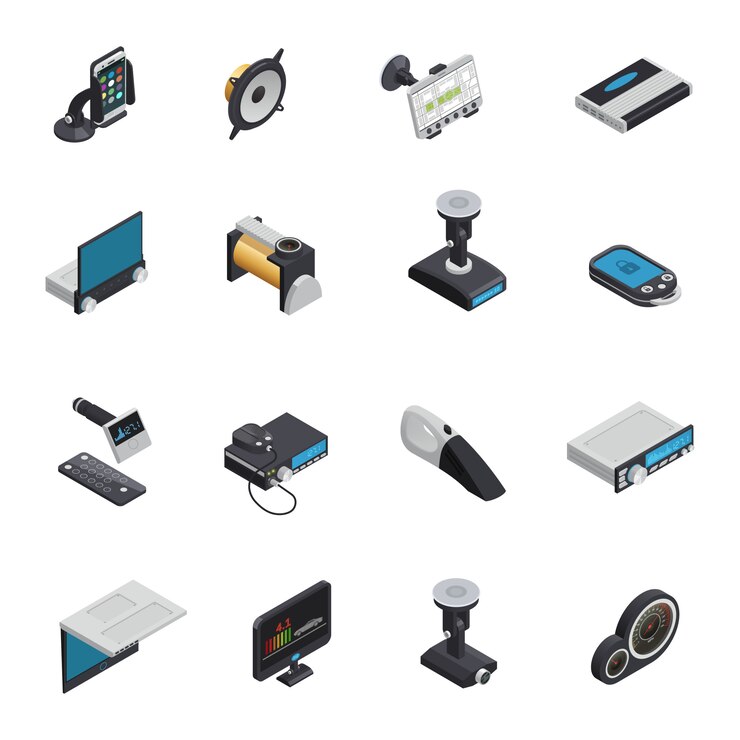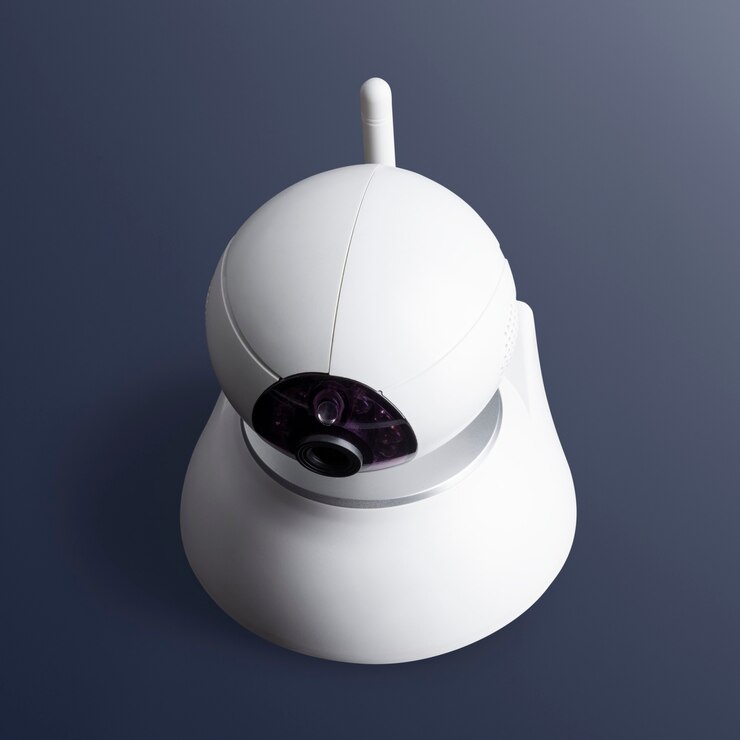The 7 Key components of CCTV include cameras, lenses, monitors, recorders, power supply, cables, and connectors. CCTV, or closed-circuit television, comprises a network of interconnected devices designed for video surveillance and security monitoring.
Each component plays a crucial role in capturing, transmitting, and storing video footage, ensuring an effective and reliable security system. Understanding the function and importance of these seven components is essential for designing and implementing a functional CCTV system. From the cameras that capture the video to the monitors that display it, and the recorders that store the footage, the components work together seamlessly to provide comprehensive surveillance and protection.
We will explore each component in detail, shedding light on their significance and impact in the world of CCTV technology.

Understanding The 7 Components Of Cctv
Closed-circuit television (CCTV) systems are a vital tool for enhancing security and monitoring activities in various settings. Understanding the components of a CCTV system is crucial for ensuring its effectiveness in safeguarding properties and people. In this article, we’ll delve into the 7 essential components of CCTV, shedding light on their importance and key considerations before installation.
Importance Of Cctv Systems
CCTV systems play a pivotal role in deterring criminal activities, preventing theft, and enhancing overall safety in both residential and commercial environments. With the ability to provide real-time surveillance and record footage, CCTV systems enhance the investigative capabilities of law enforcement and aid in identifying and prosecuting perpetrators. Furthermore, they offer peace of mind to property owners and occupants, creating a sense of security and reassurance.
Key Considerations Before Installing Cctv
Before embarking on the installation of a CCTV system, it’s essential to carefully consider various factors to ensure optimal functionality and compliance with regulations. Important considerations include the selection of suitable camera types, strategic camera placement, proper lighting, storage and retention of video data, privacy concerns, and compliance with legal requirements. Neglecting these considerations can result in inadequate coverage or legal complications that may compromise the system’s effectiveness.
In addition, understanding the environment in which the CCTV system will be deployed, such as outdoor or indoor settings, wide or narrow coverage areas, and the need for remote access, is crucial in selecting appropriate equipment and designing an effective surveillance layout. An installation that addresses these considerations ensures the system’s ability to fulfill its intended security and surveillance objectives.
Cameras: The Eyes Of The System
CCTV systems consist of various components that work together to provide surveillance and security. Among these components, cameras are often considered the most crucial, serving as the eyes of the system. The choice of cameras can significantly impact the effectiveness of a CCTV system. Understanding the types of CCTV cameras and the factors to consider when choosing them is essential for ensuring optimal surveillance and security.
Types Of Cctv Cameras
There are several types of CCTV cameras, each designed for specific purposes and environments. Understanding the different types can help in selecting the most suitable camera for a particular surveillance need. The most common types of CCTV cameras include:
- Bullet cameras
- Dome cameras
- PTZ (Pan-Tilt-Zoom) cameras
- Box cameras
- Covert cameras
- IP cameras
Factors To Consider When Choosing Cameras
When choosing CCTV cameras, several factors should be taken into account to ensure they meet the specific surveillance requirements. These factors include:
- Resolution and image quality
- Indoor or outdoor use
- Field of view and coverage area
- Low-light and night vision capabilities
- Installation and maintenance requirements
- Integration with other systems
- Budget constraints
Digital Video Recorder (dvr) Or Network Video Recorder (nvr): The Brain Of The System
When it comes to setting up a comprehensive CCTV system, the Digital Video Recorder (DVR) or Network Video Recorder (NVR) serves as the brain of the security setup. These devices play a pivotal role in capturing and storing video footage, enabling users to monitor and review the recorded content for security purposes. Understanding the differences between DVR and NVR, as well as the essential features to look for in these devices, is crucial for implementing an effective surveillance system.
Differentiating Between Dvr And Nvr
Before deciding on the appropriate recording device for your CCTV system, it’s essential to understand the distinctions between DVR and NVR.
- DVR: Digital Video Recorder, best suited for analog cameras. It processes video data directly from analog cameras, converts it to digital format, and stores it on an internal hard drive.
- NVR: Network Video Recorder, designed for IP cameras. NVRs receive video data from IP cameras via a network switch or router and store the data directly onto a built-in hard drive or external storage devices.
Features To Look For In A Dvr Or Nvr
When selecting a DVR or NVR for your surveillance system, it’s crucial to consider the following features:
- Camera Compatibility: Ensure the device supports the type and quantity of cameras you intend to connect.
- Storage Capacity: Opt for a recorder with ample storage to accommodate your video recording requirements.
- Remote Viewing: Look for options that allow remote access to the video feed for real-time monitoring.
- Quality of Video Output: Check for the resolution and frame rate support provided by the recorder to ensure high-quality video output.
- Reliability and Durability: Select a device known for reliability and longevity to ensure uninterrupted surveillance.
The features mentioned above are essential for ensuring the effectiveness of your surveillance system.
Cabling And Connectors: The Network Of The System

When setting up a CCTV system, the cabling and connectors are crucial elements as they form the network of the entire system. Understanding the different types of cables and connectors, as well as best practices for their installation and maintenance, is essential for ensuring the optimal performance of your CCTV system.
Types Of Cables And Connectors
When it comes to cabling for a CCTV system, there are two primary types of cables commonly used: coaxial and Ethernet cables. Coaxial cables are the traditional choice, known for their durability and ability to transmit video signals over long distances without interference. On the other hand, Ethernet cables, such as Category 5e or Category 6 cables, are increasingly being used for their ability to transmit not only video signals but also data and power, making them a versatile option for modern CCTV systems.
Best Practices For Cabling And Connections
- Ensure proper cable management to avoid tangling and potential damage to the cables.
- Use high-quality connectors that provide secure and reliable connections to prevent signal loss and interference.
- Adhere to recommended cable lengths to maintain signal integrity and avoid degradation.
- Implement cable shielding to protect against electromagnetic interference, especially in environments with high electrical activity.
- Regularly inspect and maintain the cables and connectors to address any issues promptly and prevent system downtime.
Monitor: Viewing And Playback
The monitor plays a crucial role in the viewing and playback of CCTV footage. It is essential to choose the right monitor and integrate playback capabilities to ensure effective surveillance monitoring.
Choosing The Right Monitor
When selecting a monitor for CCTV viewing, it is essential to consider the display resolution, size, and compatibility with the surveillance system. High-resolution monitors such as 1080p or 4K enable clear and detailed playback of footage, ensuring that no details go unnoticed. Furthermore, choosing a monitor with a size suitable for the viewing area is important to ensure optimal visibility of the footage. It is also critical to ensure that the chosen monitor is compatible with the CCTV system to avoid any technical issues during installation and usage.
Integrating Playback Capabilities
Integrating playback capabilities into the monitor enables easy access to historical footage. This functionality allows for the viewing of previously recorded video, which is essential for forensic monitoring, investigations, and incident analysis. Efficient playback capabilities can include features such as timeline navigation, video playback speed control, and advanced search functions, making it easier for users to find specific footage and review events in detail. It is vital to ensure that the monitor is equipped with these playback features to maximize the effectiveness of the CCTV surveillance system.
Power Supply And Surge Protection: The Lifeline Of The System
CCTV systems are composed of several key components, each of which plays a crucial role in ensuring the system’s functionality and effectiveness. Among these components, power supply and surge protection serve as the lifeline of the entire CCTV system. Selecting appropriate power supplies and implementing effective surge protection measures are vital for maintaining the stability and longevity of the system.
Selecting Appropriate Power Supplies
When setting up a CCTV system, it’s essential to carefully choose the right power supplies to ensure reliable and continuous operation. Quality power supplies can minimize the risk of system disruptions and equipment failure, providing a consistent and stable power source for the cameras, recorders, and other components. This involves selecting power sources that are compatible with the specific power requirements of the CCTV devices, as well as considering factors such as voltage, current capacity, and overall reliability.
Importance Of Surge Protection
Surge protection is paramount in safeguarding the CCTV system against voltage spikes and transient surges that can potentially damage sensitive electronic components. By incorporating surge protection devices into the system, such as surge protectors and lightning arrestors, the risk of damage from electrical disturbances, lightning strikes, and power surges can be significantly reduced. This protection not only helps to preserve the longevity of the CCTV equipment but also minimizes the potential for downtime and data loss caused by power-related incidents.
Remote Access: The Access Control
Remote access is a fundamental component of CCTV systems, enabling users to view and manage the surveillance footage from anywhere in the world. This access control feature provides convenience and flexibility for monitoring and managing security, making it an indispensable aspect of modern surveillance systems.
Enabling Remote Viewing And Management
Enabling remote viewing and management is a crucial aspect of CCTV systems. With the advancement of technology, users can now access live feeds and recorded footage from their smartphones, tablets, or computers. This feature allows for real-time monitoring and playback of footage, ensuring that users can stay connected to their security system at all times.
Security Considerations For Remote Access
Security considerations for remote access indicate security risks that need to be addressed. While remote access offers convenience, it also introduces potential vulnerabilities that hackers can exploit. It is essential to implement robust security measures to safeguard against unauthorized access and data breaches.
Frequently Asked Questions On What Are The 7 Components Of Cctv?
What Are The Main Components Of A Cctv System?
The main components of a CCTV system include cameras, recording devices, monitors, cables, power supply, and video management software. Each component plays a crucial role in ensuring effective surveillance and security.
How Do Cctv Cameras Work For Surveillance?
CCTV cameras capture video footage of the designated area and transmit it to the recording device or monitor. They use lenses to focus on specific areas, creating a live feed or recording for surveillance and security purposes.
Why Is The Quality Of Cctv Lenses Important?
The quality of CCTV lenses determines the clarity and sharpness of the captured footage. High-quality lenses ensure better resolution, improved night vision, and enhanced overall surveillance capabilities for the CCTV system.
Conclusion
Understanding the seven components of CCTV is crucial for effective surveillance systems. From cameras to monitors and everything in between, each component plays a vital role in ensuring security and peace of mind. By familiarizing yourself with these components, you can make informed decisions when setting up your CCTV system.
